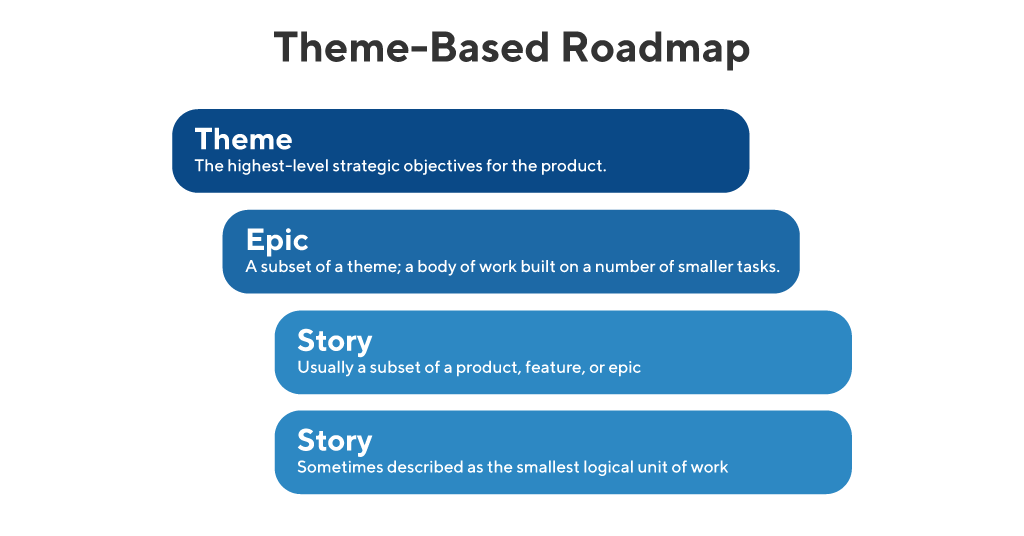Velcro sneakers are relegated to the senior citizens’ section of shoe stores. Plasma TVs are collecting dust. Vine’s six seconds of fame has passed. The universal rule to trends is that they are fleeting. Yet some trends manage to find staying power. There are a few product management trends that look like keepers. Here are eight of them that have what it takes to go the distance:
8 Product Management Trends That Are Here to Stay
1. Specialized roles.
Product managers wear a lot of hats. The go-to, whatever-it-takes product management professional is far from an endangered species. However, there are other opportunities for product team members to narrow their focus to specific domains.
These jobs require a more limited range of skills but a deeper understanding of what’s core to their area of expertise. As organizations realize the value of product management, we’ll continue to see more of these roles.
These roles zoom in on critical aspects of product management. Aspects that generalists can’t spend enough time on or do not have the expertise to handle. These specialized roles include technical product managers, product ops, and onboarding specialists. Look for more openings for growth product managers and analytics-focused product team members as well. The increased demand means that this product management trend is here to stay.
2. Demand for data.
The exponential growth of computing power and connectivity has given every product team a great amount of data. So, they have access to way more information about users and their behavior than we could have imagined.
Product leaders have become spoiled with all this data at their disposal. So have the stakeholders which they need to secure alignment and buy-in from. AI and machine are learning still in its infancy. The expectations that every decision-making process accompanied by reams of supporting data will only increase.
Don’t count on “gut-feel” decisions coming back into vogue anytime soon. Instincts might generate a hypothesis. But executives will demand the data driving roadmapping decisions. Product leaders will lean even heavier on data for planning and prioritization.
3. “As-a-Service” pricing models.
Subscription services have become ubiquitous, from meal kits to video games to Microsoft Office. Consumers love the lowered cost-of-entry price point, and companies want recurring revenues.
For product managers, that has many knock-on implications, including
- Getting from “trial” to “adoption” is more important than ever. Users can “quit” before you’ve recouped your cost of acquisition.
- Product roadmaps must continue delivering additional value. It’s essential to make customers feel like they’re getting their money’s worth after the initial “new car smell” wears off.
- Accurately calculating the lifetime value of customers, which is critical to achieving profitability.
- Product “maintenance” must be a continual part of the conversation. To ensure the product keeps performing well and that the resources required don’t detract from enhancing functionality.
- Enterprise pricing must be flexible to handle the customer-specific preferences. Which includes decisions on which budgets are tapped as well as their ability to make long-term contractual commitments.
4. Remote/virtual stakeholder management.
The COVID-19 pandemic has pressed “fast forward” on companies embracing remote work. Consequently, it’s safe to say that many organizations will never fully return to the office. Therefore, this product management trend is here to stay.
Product managers previously used informal opportunities to take the temperature of executives on hot topics or build up personal relationships. This task will now require much more intentional action to establish those connections and have those impromptu interactions. However, distributed product teams are here to stay. Leaders must create new forums and opportunities to have those crucial conversations.
5. Theme-based product roadmapping.

The feature factories of the past are replaced by big-picture approaches to prioritization and roadmapping. Instead of leading with specific functionality and release dates, product leaders are coalescing around broader themes that map to strategic objectives.
The net result may very well be additional functionality for end-users. Theme-based roadmapping shifts the focus from the “what” to the “why.” Initiatives are directly tied to how they’ll influence KPIs. Implementation teams have more leeway to get the biggest bang for their development buck.
As more organizations see success using this approach, executives and stakeholders are becoming increasingly comfortable with the relative ambiguity of themes. They realize the value of concentrating on one or two parts of the product at a time. It has a more significant impact than a scattershot smattering of improvements.
6. Moving beyond the individual contributor.
Product managers have had many opportunities over the years to raise their profile and reap some rewards from seniority. But, it’s only recently that product management’s strategic importance has been realized across a broad swath of organizations and industries.
Instead of being located within marketing or engineering departments, product management is being given its due. Companies are staffing up entire teams or product managers. Thus creating more leadership opportunities. Giving more product leaders a seat at the executive table as Chief Product Officers and VP-level management.
The profile of product management continues to rise. Meaning product leaders duties are shifting. The role is now concerned with people management, talent development, recruiting, delegating, and consistent operations and communications. Much more than when it was primarily the provenance of lone wolf types.
7. Using multiple prioritization frameworks.
Based on our survey data, product managers are leveraging more than one method to decide which initiatives make it to the front of the queue. They’re not doing this for variety’s sake, although mixing it up is in-and-of-itself refreshing and inspiring.
Product teams are finding that different prioritization methods can net different results and offer a way to engage additional stakeholders. While you might not want to use a new one every time, rotating product management frameworks is a healthy way to get fresh perspectives.
Look for popular choices such as the MoSCow, Product Tree, Value vs. Complexity to become more common as other product managers learn more about the different benefits these frameworks have to offer.
8. Cloud-based product roadmaps.
Product roadmaps were once exclusively “documents.” They presented the direction of the product at the precise moment. They were created and became outdated “snapshots” as situations changed, schedules slipped, and priorities shifted.
Thanks to digital solutions such as ProductPlan, static product roadmaps are rapidly becoming an artifact of the past. In today’s world, there’s no reason to circulate a soon-to-be-stale product roadmap in a PDF or PowerPoint. Especially when you can give stakeholders access to a live, always up-to-date product roadmap they can access at the click of a button.
This does put the onus on product managers to continually update their roadmaps. But that’s a worthy endeavor to ensure no one is operating under outdated assumptions or deploying resources using an obsolete document. The additional benefits of custom views for different audiences make a permanent migration to cloud-based product roadmaps a no-brainer.
Takeaway
These product management trends signal more than minor changes for Product Managers. Above all, the largest trend is product management evolving and gaining greater recognition. People are now onboard the product management bandwagon. As a result, there are additional opportunities to elevate the profession.


